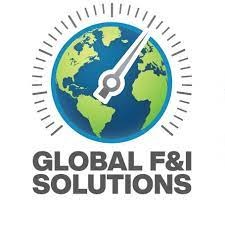
Understanding the Latest Trends in EV Charger Reliability
The landscape of electric vehicle (EV) charging is undergoing a significant transformation. Recent findings from J.D. Power indicate that public EV chargers are becoming increasingly reliable, despite fluctuations in federal support and shifting market dynamics. This report is particularly relevant for car dealership owners and general managers, who need to stay ahead in a rapidly evolving automotive environment.
Significant Improvements in Charger Reliability
According to J.D. Power's annual study, the percentage of failed public charger visits has dropped to its lowest point in four years. The survey, conducted between January and June, reached over 7,400 EV owners and revealed that only 14% reported encountering nonworking chargers – a notable improvement of five percentage points from previous years. This reliability enhancement poses a promising outlook for the future of EV adoption, which has often faced hurdles due to inconsistent charging infrastructure.
Impacts of Federal Funding and Private Initiatives
While federal support for EV infrastructure has fluctuated—with notable cuts during the prior administration—private initiatives spearheaded by automakers are bridging the gaps. Following a court's ruling that mandates the release of federal funding for the expansion of EV charging infrastructure, automakers have been leveraging National Electric Vehicle Infrastructure (NEVI) guidelines in their new charger networks. This influx of investment is propelling advancements in public charging reliability.
Satisfaction Levels: A Mixed Bag
Despite improvements in reliability, overall satisfaction among EV drivers remains a challenge. J.D. Power's survey revealed a noticeable decline in satisfaction with direct-current (DC) fast chargers, dropping by ten points on its 1,000-point scale to just 654. Factors contributing to this dissatisfaction largely revolve around the increasing costs of charging. As competition among charging networks intensifies and electricity prices rise, drivers are feeling the pinch.
The High Cost of Charging
The evolution of charging prices poses risks to user satisfaction. Gruber, director of J.D. Power's EV practice, notes that while Tesla Superchargers maintain high satisfaction ratings due to the perception of luxury and superior service, non-Tesla users frequently report discontent with the cost-effectiveness of their charging experiences. Many charging networks had initially kept fees low to establish a customer base, but as market conditions evolve, prices are adjusting, dampening the overall ownership experience.
What This Means for Car Dealerships
For car dealerships, understanding these trends is essential. As EVs become more popular, having reliable charging infrastructure will be a selling point for vehicles. Training your sales team to be knowledgeable about the latest EV charging developments can equip them to better serve customers and address their concerns regarding infrastructure. There are also opportunities in offering services related to EV charging, tailoring financing options that cater to EV owners, and promoting automotive training programs that educate staff on these changes.
Looking Ahead: Future Insights on EV Charging
As the automotive industry shifts toward electrification, the demand for reliable and efficient charging solutions will become more pronounced. Dealerships that engage with these trends proactively will not only enhance customer satisfaction but also strengthen their market position in the long term. The combination of federal support, private initiatives, and technological advances will be crucial for building a comprehensive charging ecosystem that promotes EV adoption.
For car dealership owners and general managers, understanding these dynamics is paramount in adapting to the evolving landscape of electric vehicles and ensuring robust customer satisfaction as they make this significant transition. For more info call: (860) 707-9125.
 Add Row
Add Row  Add
Add 




Write A Comment